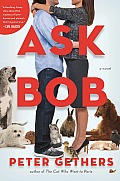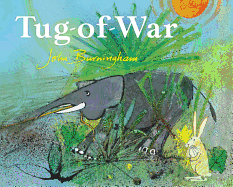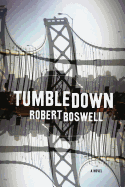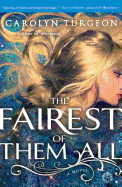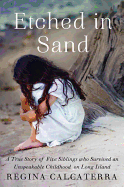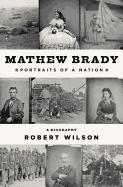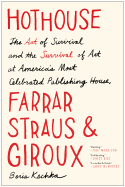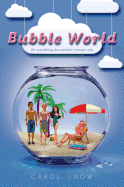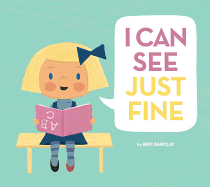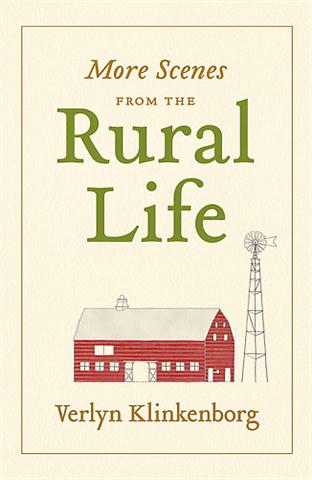 Occasionally, we feel the need to simply excerpt a book we delight in. Upstate New Yorker Verlyn Klinkenborg has been writing a column, "The Rural Life," for the New York Times since 1997, where it quickly became beloved. Princeton Architectural Press has just published More Scenes from the Rural Life ($24.95), 173 of his best pieces since the last collection. It's graceful, poetic, sharp--and rewards both a straight-through reading and dipping into dates according to season.
Occasionally, we feel the need to simply excerpt a book we delight in. Upstate New Yorker Verlyn Klinkenborg has been writing a column, "The Rural Life," for the New York Times since 1997, where it quickly became beloved. Princeton Architectural Press has just published More Scenes from the Rural Life ($24.95), 173 of his best pieces since the last collection. It's graceful, poetic, sharp--and rewards both a straight-through reading and dipping into dates according to season.
March 9
I've been considering the four-way stop--the smallest and most successful unit of government in California. It may be the perfect model of participatory democracy, a fusion of "first come, first served" and the Golden Rule.
August 2
Writing about tomato plants:
I'm a ruthless pincher. Off go the suckers--sprouting in the joint between branches and stem--and off goes any branch that looks like it's going into business for itself.... My other skill is tying up tomatoes.... As skills go in this complicated world, these are as simple as they come. And yet I can't explain how much pleasure it gives me to examine each stem for suckers, to know that I've really looked those tomatoes over....The truth is, I'd rather grow tomatoes than anything else, with the possible exception of pumpkins.
September 23
I promised myself this year that I'd cut the thistles before they went to seed. But thistledown is in the air and lying in clumps…For a few nights last week the sky caught a late glow behind the birch trees on the hill west of here. The light seemed to lift stray bands of clouds apart from the soft opacity of the blue behind them, a blue that memory alone can't do justice to. I go outside at night now just to admire how steep the temperature gradient has become, how the mercury seems to roll off the table once dark comes. Fall is here.
--Marilyn Dahl, editor, Shelf Awareness for Readers
Babayaga
by Toby Barlow
A heady mix of dark magic, espionage and occasional free verse, Babayaga, the sophomore novel from Toby Barlow (Sharp Teeth), mixes a traditional take on Eastern European witchcraft tales with the author's skewed sense of humor and a wistful brand of romance.
In postwar Paris, the beautiful Zoya drifts from one relationship to the next. Unlike most other down-on-their-luck expatriates, though, Zoya is a centuries-old witch who kills her lovers once they realize she isn't aging. Although Zoya's coven believes in using and destroying men, her fellow witch Elga prefers to keep a low profile; the absence of war means Zoya's gruesome murders attract attention. When Zoya impales her latest lover's head on a spike, the trail leads Inspector Vidot of the Parisian police to Elga's door. Angered, Elga swears a bloody vow of vengeance against Zoya and transforms Vidot into a flea.
Will is an American ad man in Paris whose agency is a CIA front. He falls in love with the stunning and mysterious Zoya, who sees a bravery and tenderness in Will that stays her usually bloodthirsty hand. While Will tries to regain a file stolen by rival spies and keep Zoya out of Elga's way, Inspector Vidot makes his six-legged way across Paris. He sees much he needs to make right--if he can break the spell before he lives out the short lifespan of a flea.
And there's more! Inebriated secret agents, a chorus of witches from Zoya's coven and weaponized mind-expanding drugs round out Barlow's ambitious plot, making for a nonstop adventure in the City of Lights that's sometimes morbid, often hilarious and always deftly thought-provoking. --Jaclyn Fulwood, youth services manager at Latah County Library District and blogger at Infinite Reads
Discover: Barlow's hilarious second novel combines traditional witch lore with Cold War espionage, star-crossed love and a detective turned into a flea.
Ask Bob
by Peter Gethers
Peter Gethers's popular memoirs, starting with The Cat Who Went to Paris, put his name on the literary map. In Ask Bob, Gethers tackles fiction, telling the story of Dr. Robert Heller, a prominent New York City veterinarian who also pens a newspaper column ("Ask Dr. Bob") addressing the concerns and woes of pet owners. Dr. Bob is no-nonsense in the delivery and approach of his column--and with his patients and their owners--but he's not as direct in his personal life. He comes from a dysfunctional family that has made his role as son, brother, uncle and lover a muddled, thorny challenge. When Bob meets and falls in love with a woman whose family has more issues than his, he takes solace in their romance and the security of his job, concluding that he understands animals better than people. But when tragedy strikes, Bob is forced to meet the challenge and tend to the people he loves and cares for the most.
Gethers has written a smart, lively novel infused with romance and heartfelt, real-life complications of family and domesticity, centered on the women in Bob's life who influence him the most over an 18-year period. Several of Dr. Bob's newspaper columns are interspersed throughout the novel, along with his charming, insightful notes about certain clients and important people in his life; these add levity and humor to the story's heavier themes. --Kathleen Gerard, blogger at Reading Between the Lines
Discover: The author of The Cat Who Went to Paris (and its sequels) examines the romantic and domestic complications of a New York City veterinarian in this debut novel.
The Goddess Chronicle
by Natsuo Kirino, transl. by Rebecca Copeland
Natsuo Kirino (Out) brings readers a clash between gods and mortals, will and destiny, and life and death in The Goddess Chronicle, a reimagining of the Japanese creation story starring the god Izanaki, his beautiful but doomed wife, Izanami, and the human beings who have the misfortune of getting caught up in their ongoing feud.
Namima has always been second-best next to her stunning and talented sister, Kamikuu, but adores her anyway. Sadly, the sisters have been destined from birth to take different paths: Kamikuu will become the next Oracle of their island and live a life of luxury, but Namima is destined to become the priestess of darkness and to dwell alone. The girls are separated when Kamikuu is sent to begin her training and then when Namima is forced to take up the mantle of priestess of the dead, to live among corpses and ensure their spirits do not wander among the living. When she tries to escape her fate, betrayal by the man she loves lands Namima in the underworld, where she must serve Izanami, a death goddess who understands the pain of scorned love and the thirst for revenge.
Kirino captures the rivalry-laced love of sisters, the bitterness of the female role in mythology and the destructive powers of yearning for vengeance. While Western audiences will not likely recognize the names of the gods and goddesses mentioned in this story, Kirino's story of mortal and immortal passions transcends cultural barriers. --Jaclyn Fulwood, youth services manager at Latah County Library District and blogger at Infinite Reads
Discover: A passionate and imaginative story of two sisters caught up in the power play between the deities of ancient Japan.
Tumbledown
by Robert Boswell
In Tumbledown, Robert Boswell (Mystery Ride; Century's Son) fleshes out a clinic full of colorfully off-plumb clients at Southern California's Onyx Springs Rehabilitation and Therapeutic Center. James Candler is their therapist, counselor and even friend, but he doesn't really have it together, either. One successfully rehabbed former client comments: "He was a man with demons who helped others by seeing himself in them."
A former counselor himself at a San Diego clinic, Boswell focuses on Candler and the reconciliation of his empathy for his clients with his own uncertainty and search for love and stability. However, Boswell's real gift is to bring Candler's damaged clients to life in ways that transcend their limitations. Take Mick Coury, a schizophrenic artist who knows his "meds made him like the blackened nub of an eraser on a pencil, while his mind without medication was like the pointed end... how could he compose with an eraser?" Or Alonso, "dumb as a sack of stupid... and couldn't think his way out of an elevator." Onyx Springs clients can function marginally in their own "outside" worlds, but the glue that holds them is the clinic's Goodwill-like work shelter and the compassionate Candler's attentive patience.
With a big heart and a perceptive eye for the layers of wisdom behind the surface kinks of madness, Boswell stands solidly in the literary tradition that brings us understanding through those who don't quite understand. --Bruce Jacobs, founding partner, Watermark Books & Cafe, Wichita, Kan.
Discover: Set at a Southern California rehab clinic, Robert Boswell's new novel finds universal connection among the misfit clients and staff.
The Fairest of Them All
by Carolyn Turgeon
The familiar fairy tales of Rapunzel and Snow White are skillfully intertwined in Carolyn Turgeon's The Fairest of Them All. It opens with a young Rapunzel luring a prince to her tower with the magical wiles taught to her by her adoptive mother, Mathena. After an afternoon of passion, Prince Josef must return to his castle and his betrothed, although he never forgets the beauty of Rapunzel.
Seven years later, Josef is king. When his beautiful queen dies mysteriously, leaving his daughter, Snow White, motherless, he quickly travels back to the forest to find Rapunzel and make her his queen. Rapunzel, accustomed to living in isolation, has a hard time adapting to life in the castle. People scorn her as a witch; many are upset by Josef's rapid remarriage. But she finds consolation in connecting with her stepdaughter, Snow White--and in her mirror's constant confirmation that she is the fairest of them all.
One day the inevitable happens, and the mirror informs Rapunzel that Snow White has surpassed her in beauty. Josef has also become unfaithful, too. The combination of events enrages Rapunzel, causing her to make some irretrievable errors in judgment. The connection Turgeon makes between the two familiar fairy tales brings out the humanity in the "wicked queen" of the Snow White story, making the reader see how she came to be who she was. Fans of fairy tales and paranormal romances will both enjoy this magical little tale. --Jessica Howard, blogger at Quirky Bookworm
Discover: The story of Snow White's evil stepmother, Rapunzel.
The Hypothetical Girl
by Elizabeth Cohen
In The Hypothetical Girl, Elizabeth Cohen's first collection of stories, the protagonists (mostly women, mostly ages 30-50) leap onto Internet dating sites with a kind of hopeless abandon.
Cohen (The Family on Beartown Road) illustrates the many ways that online courting can go astray, from the bachelor with the silver Audi convertible who turns out to be bald with "a shiny crown of tanned flesh, like a yarmulke that had vacationed in Florida" to the Icelandic yak farmer who's really a police officer in Akron. Perhaps the most haunting and sad story is "Life Underground," where Alana longs for a family like that of her sister, whose husband, Peter, is a novelist who spends his time "in the garage doing some manly garage thing." Yet when she finally discovers Max, a seemingly compatible partner, Alana holds off his requests for a personal meeting. Visiting her sister's house, Alana discovers Peter's porn-filled laptop; she never does connect in person with Max, deciding that it is better that he "live in her computer, under circuits and a motherboard and back inside the walls of her house."
If there is a serious lesson in Cohen's rom-com of Internet dating, it might be that learned by Clarissa in "Dog People," who accepts that who she is may be not too bad: "a woman in the middle of her own imperfect but cozy universe, a life made of yoga stretches and yogurt smoothies, mornings with coffee on her back porch, taking in the day." --Bruce Jacobs
Discover: Cohen's accomplished and funny first collection of stories cuts to the heart of the often heartless and "unfriendly" give and take of the world of Internet dating.
Biography & Memoir
Etched in Sand: A True Story of Five Siblings Who Survived an Unspeakable Childhood on Long Island
by Regina Calcaterra
Etched in Sand opens with a comforting prologue: Regina Calcaterra is now the chief deputy executive of Suffolk County, N.Y. Knowing this, the horrors she and her siblings endured as children--abused, neglected and ill-served by the agencies designed to protect them--are even more incredible. Calcaterra was the middle of five children and the most frequent target of abuse from her mother, Cookie--who unashamedly cashed welfare checks to support her drinking and would abandon the children for months at a time. With no involvement from any of their fathers, the "scrappy pack of homeless kids" relied on each other, becoming expert shoplifters and truants while staying under the radar of social services. When Regina finally broke down and revealed their plight to a social worker, they were scattered, Regina placed in a long-term but lonely foster home.
In a well-constructed back-and-forth narrative spanning 1980 to 2012, Etched in Sand follows the Calcaterra siblings into adulthood. Regina aches to be connected to them all; in time, her tenacity is rewarded. "We pushed ourselves up through the riptides," she reflects. While indicting the social service agencies who failed to serve her family and a foster system that "ages out" children with no support, Calcaterra also recognizes the many kindnesses they received, and the many achievements of Cookie's kids: "Together, we stopped the cycle." --Cheryl Krocker McKeon, bookseller, Book Passage, San Francisco
Discover: A heartbreaking but ultimately hopeful memoir of five siblings who survived homelessness, and an honest perspective on social service agencies.
Soil and Sacrament: A Memoir of Food and Faith
by Fred Bahnson
Alongside the burgeoning local food movement in the U.S. is a smaller, related initiative led by faith-based agrarian groups whose connection to the land is intertwined with their beliefs. Fred Bahnson, the director of Wake Forest University's Food, Faith, and Religious Leadership Initiative, visits several of these faith-based food communities while recounting his own journey back to the land.
Bahnson times his visits to coincide with religious seasons and festivals, spending Advent cultivating mushrooms with monks in South Carolina and partaking in a joyous Sukkot celebration at a Jewish organic farm in Connecticut. Woven throughout are anecdotes from Bahnson's time directing the Anathoth Community Garden, Cedar Grove, N.C., whose existence raised not only spiritual but social issues for the racially divided community it serves.
Bahnson's strength is social observation: his portraits of people and places are deft and insightful, while the book's personal sections can feel self-indulgent and rambling. But he captures the diversity of the faith-based food movement, which involves prisoners, professors, undocumented workers and farmers who have made the land their life's work. Texts and precepts from Judaism, Buddhism and Bahnson's own Christian faith further explore the deep ties between caring for the land and caring for one's neighbor. "Our yearning for real food is inextricably bound up in our spiritual desire to be fed," he notes. For Bahnson, planting, praying and providing food for hungry people are all important--and intertwined--ways to make a difference in the world. --Katie Noah Gibson, blogger at Cakes, Tea and Dreams
Discover: An exploration of the ties between farming, faith and feeding the hungry.
Mathew Brady: Portraits of a Nation
by Robert Wilson
Mathew Brady is best known for aggressively capturing a visual, historical record of the Civil War. But beyond his influence as a pioneer in photojournalism, Brady was also a popular brand unto himself, known as "Brady of Broadway." He created studio galleries in New York City and Washington, D.C., where he sought to photograph and display life-like portraits of every distinguished American living at the time.
"Photographing famous people was a passion as well as a business plan," writes Robert Wilson in Mathew Brady: Portraits of a Nation, detailing Brady's determination to improve esthetic form and technical processes, evolving with the medium as it matured. Brady photographed iconic studio portraits of notables like Abraham Lincoln, the Prince of Wales, Dolley Madison, Henry James and Edgar Allan Poe. He was also a shrewd self-promoter and entrepreneur who believed war could be good for business. Thus, Brady and his team of photographers recorded, for the government, more than 10,000 images of the Civil War--for which he was never paid. While Brady achieved artistic success, by the end of his life, he was bankrupt and impoverished.
Few records and artifacts exist pertaining to Brady's personal life, but Wilson offers an in-depth, thoroughly researched chronicle of a driven, hard-working, competitive man. Myths and misconceptions surrounding Brady's work and influence are dispelled, enhancing the idea that Brady elevated photography as a serious and valuable art form in and of itself. --Kathleen Gerard, blogger at Reading Between the Lines
Discover: A comprehensive biography of the portrait photographer who became a visual historian--and the founding father of photojournalism.
History
Hothouse: The Art of Survival and the Survival of Art at America's Most Celebrated Publishing House, Farrar, Straus, and Giroux
by Boris Kachka
In Hothouse, New York magazine contributing editor Boris Kachka offers a spirited and well-informed history of one of the country's most distinguished publishing houses: Farrar, Straus & Giroux. For future students of the publishing business in the second half of the 20th century, this smart, unsentimental portrait will be essential reading.
Roger W. Straus, Jr., the scion of two prominent German-Jewish families, "could be cheap, vulgar, classist, and sexist all in one gratuitously cruel remark," all while holding himself out as an "aristocrat of taste in a mercenary meritocracy." From T.S. Eliot to Flannery O'Connor to Isaac Bashevis Singer, FSG attracted a roster of literary superstars (including 25 Nobel laureates), nurturing them both creatively and financially. For all his character flaws, recounted in exquisite detail, Straus was the force of nature who kept these writers in the FSG fold and made it the home of choice for contemporary authors like Jonathan Franzen and Jeffrey Eugenides.
Much of Hothouse chronicles the financial challenges that faced the house since its founding in 1946. Kachka also dishes plenty of gossipy fare about the illicit couplings at 19 Union Square West, a cramped warren of offices dismissed by Straus's wife, Dorothea, as a "sexual sewer," alongside stories of Straus's feuds and friendships with industry insiders.
Somehow, as Kachka describes it, over the nearly six decades Roger Straus was the dominant player at FSG, he created a culture that was "high-minded and scrappy, aggressive and refined, quintessentially American but thoroughly international." How he balanced on that high wire for so long makes a lively and entertaining story any book lover will devour with relish. --Harvey Freedenberg
Discover: Boris Kachka's lively history of publisher Farrar, Straus & Giroux will delight any book lover.
Children's & Young Adult
Tug-of-War
by John Burningham, illus. by John Burningham
John Burningham retells a shorter, snappier version of a West African trickster tale he originally illustrated in 1968 (for a text by Letta Schatz called The Extraordinary Tug-of-War). A beleaguered Hare figures out a way to deliver a comeuppance to his two tormentors. It's a testament to the artist's craftsmanship that his illustrations hold up 45 years later.
Only in the opening illustration do Hare, Hippopotamus and Elephant appear placidly standing together. "Often, when Hippopotamus and Elephant had nothing better to do, they would be mean to Hare and tease him," the text begins. Hippopotamus calls Hare "a tiny, wimpy thing" with "ridiculous ears." Elephant tells Hare he's a "feeble idiot." When Hare, fed up, challenges Elephant to a tug-of-war, he calls Hare a "sickly little twerp. Burningham's illustrations emphasize the animals' relative sizes, making Hare's proposition look preposterous to readers. Yet Hare outsmarts his two tormentors and uses their puffed-up pride to pit them against each other.
As Hare carries one end of the rope from Hippopotamus to Elephant, out of sight of one another, Burningham luxuriates in a lush landscape of deep greens and blues. An aerial view depicts the great distance between the two giant animals as they labor under skies that turn to the tomato-red of sunset, then the dark of night. Hare eggs them on ("Oh, Hippopotamus, aren't you tired yet?") until they surrender, then skitters safely away. The moral--that brains beat brawn--also survives some four decades later. --Jennifer M. Brown, children's editor, Shelf Awareness
Discover: Beloved illustrator John Burningham's new retelling of a trickster tale he first illustrated in 1968, in which brains beat brawn.
Bubble World
by Carol Snow
Carol Snow's (Snap; Switch) provocative novel asks teens to consider various ways in which people escape from reality.
Freesia Summers lives a vacuous life. Every day she wakes to a new song by her favorite singer, her "shiny" mother brings coffee and whatever she wishes for breakfast, and her closet overflows with "vicious" outfits for her "perfect figure." But there's trouble in Paradise. And when Freesia gets a glimpse of the world outside it, she must decide if she can continue to drink the "fizzy water" and pretend Bubble World is real, or find out if anyone else suspects--as she does--that they're living inside "a multiplayer virtual reality program." Parents sign up their children thinking Bubble World is a superior educational experience; but teens need only ask the teachers of their "immersion classes" (focused on cultures and languages) to speak English and out come the "Korean tacos." Meanwhile, corporate entities push products and pharmaceutical companies test memory blockers on Bubble World's inhabitants. Freesia's observations of people at the mall on a "visit" back to her "real" family betray an undercurrent of truth that begins to lodge in readers' minds as well as Freesia's.
Will Freesia/Francine continue passively to accept the luxuries and superficialities of Bubble World, knowing that a real world exists beyond its shiny shallow artifice? Or will she risk the consequences of seeking the truth and lose all of her pretend privileges? There's food for thought behind the frothy concoctions of Bubble World. --Jennifer M. Brown, children's editor, Shelf Awareness
Discover: A teen living in Paradise who detects trouble and must choose between fantasy and reality.
I Can See Just Fine
by Eric Barclay
In Eric Barclay's debut book for children, young Paige denies her vision problems, despite obvious clues to the contrary. For starters, she holds her book upside down and wears shoes that don't match. Accessible, cartoonish illustrations lead readers through what's in store for Paige on the way to seeing 20/20.
The author-artist plays up the humor in her situation: he pictures Paige standing on her desk to see the blackboard, and music notes tumbling off the treble staff due to her off-kilter violin playing; she brings home a very smelly kitty (aka skunk). But her parents take Paige's predicament seriously. Barclay goes through the steps to setting things right. The heroine reads an eye chart, gets drops in her eyes, then looks through "a mask with nobs and buttons" to determine what's affecting her eyesight. A spread of Paige trying on frames shows her options at the eyeglass store until she finds the right fit, and another demonstrates the "before" (blurry) and "after" (crystal clear) of what Paige experiences with her prescription filled.
Barclay provides a coda that keeps the humor front and center. Pair this with Arlo Needs Glasses by Barney Saltzberg to give children another example of finding comical parts of the problem while taking its solution seriously. --Jennifer M. Brown, children's editor, Shelf Awareness
Discover: A gentle way to introduce the topic of eyeglasses with a resistant child and what to expect in finding a solution.



